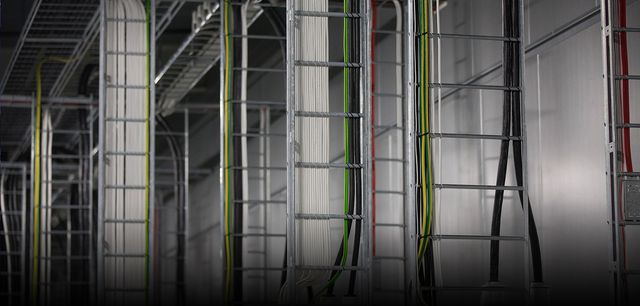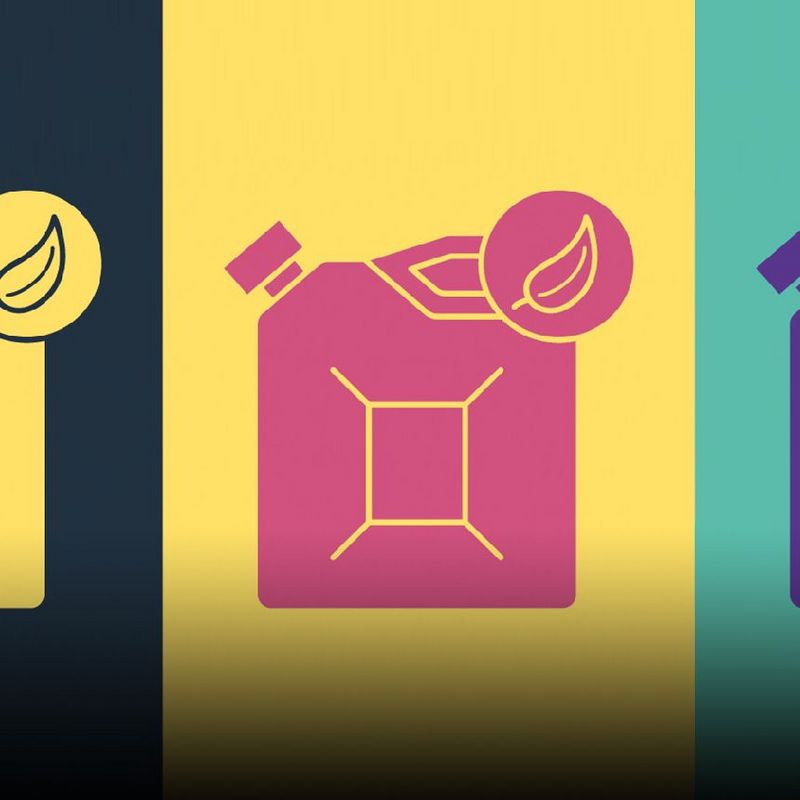02. September 2021
With Zoom during the day and Netflix in the evening, at the peak of the coronavirus crisis nearly every option we chose involved the Internet. But even if you disregard this exceptional situation, our need for data has grown continuously in recent years. And with it the appetite for electricity of the data centres that supply us with those data – with consequences for the environment. If we wish to avoid radical restrictions on our Internet habits in the future, global data centres will have to become more energy efficient.
With activities ranging from streaming, shopping and surfing to gambling, ever larger volumes of data are coursing through the Internet every day. It is the breakthrough into the mainstream of streaming services in particular which has significantly added to the deluge of data. German data centres consumed around 16 billion kilowatt hours of electricity in 2020 – more than the power used by a major city like Berlin in a whole year. In Frankfurt am Main, the capacities of the server farms have quadrupled in the last decade, long since replacing the airport as the largest power guzzler in the financial metropolis. This is a trend that is likely to be significantly amplified by the Internet of Things, AI and 5G. Today, data centres are responsible for three percent of global electricity consumption, and the predictions are that this share will increase to 10 to 15 percent by 2040 – with corresponding consequences for the global climate.
The like that came in from the cold
There is no denying the fact that the energy efficiency of data centres has improved enormously in recent years. But this cannot compensate for the growing hunger for data. Much of the energy goes toward cooling the servers. Data centres are therefore increasingly being built in colder regions. One example is Facebook’s Swedish data center in Luleå, on the edge of the Arctic Circle. The average annual temperature here is 1.3 degrees – in the German data Mecca that is Frankfurt, it is 8.4 degrees. And since the mercury in Luleå only occasionally climbs above 16 degrees even in summer, significantly less energy than would otherwise be the case is needed to cool down the hot servers. The social media group obtains the necessary electricity from hydropower, which is available at knock-down prices in Sweden. Surely these are good reasons to set up the majority of the world’s server farms in the Arctic Circle? “From an energy point of view, this is of course a good thing, but only Internet giants such as Facebook or Google can afford it,” says Marc Wilkens of TÜViT, moving swiftly to dampen expectations. Laying data cables over hundreds of kilometres costs a lot of money, according to the expert in data centre efficiency.
In the next few years, what are known in the business as co-location data centres are likely to proliferate like mushrooms. Companies or authorities can rent servers here – the operators provide the space and take care of cooling, electricity and IT infrastructure. “Our experience shows us that companies are looking for proximity to their servers – among other reasons, to keep the signal paths for data synchronisation short,” says Wilkens. The longer the distance, the more anxious firms become that they will lose direct access to their valuable data. Which is why it is difficult even for co-location operators in Germany to set up a data centre in more remote locations.
Data from the depths
Alternatively, data centres could also be set up in the ocean, as Microsoft has done on a trial basis in Project Natick – with promising results, the tech giant emphasises. However, this method does not make for ease of maintenance. If defective deep-sea modules were simply to be replaced by new ones, resource efficiency would go out of the window at the same time, Wilkens explains. Not only that, but it’s also still unclear whether the waste heat from the computers would have an impact on the flora and fauna on the seabed.
Quite apart from the environmental impact, the green IT expert sees few useful applications for underwater servers. Even though it must be said that, being situated below sea level, they are by definition well protected from unauthorised intruders. Attackers would have to take to a submarine to hack into the data treasure house. According to Wilkens, however, the possibility of water ingress into data centres is in any case one of the biggest concerns that land-based operators have. It’s hard to imagine that anyone would expose their sensitive data to this risk in the ocean. A subsea server would however be conceivable, for example, for cloud services. After all, these run on standard servers: Once configured on land, they would not have to be readjusted under water. “However, these kinds of applications are already operated very efficiently – meaning that the expense and effort probably wouldn’t pay off.”
Sustainable underwater data centre: algae, barnacles, sea anemones - and the Microsoft logo.
Waste heat causes algae to grow
But there are also ways and means of making good use of the waste heat from the servers on land. In Uitikon, Switzerland, for example, it has been providing warm water for the local indoor pool since 2008. In Sweden, 30 data centres are already feeding their waste heat into the district heating network. By 2035, waste heat from the server farms is expected to cover one tenth of Stockholm’s heating needs.
Individual lighthouse projects are already up and running in Germany. At Vattenfall’s Hamburg headquarters, around 50,000 square metres of office space are heated using the waste heat from the servers. A data centre run by VW Financial Services in Braunschweig keeps the 400 apartments of a neighbouring new development warm in winter. In Enge-Sande, North Frisia, on the other hand, a start-up is using the waste heat to grow algae on the roof of its server farm.
For many German operators of data centres, the use of waste heat has a lot of potential – but most still consider it too uneconomical, as is revealed by a survey carried out by the Network of Energy-Efficient Data Centres. And the problem here is that the temperature of the waste heat carried via conventional air cooling systems is usually too low to be used directly for hot water or in a heating system. For this reason, it has to be heated to the required temperature using heat pumps, for example. This in turn requires electricity – and, as is well known, this is not cheap in Germany. According to the Bitkom industry association, heat pumps should for this reason be exempted in future from the surcharge set out in Germany’s renewable energy act, the EEG.
Subsidies to promote the use of waste heat are conceivable in principle, says Marc Wilkens. But a blanket EEG exemption for heat pumps would be missing the point. For example, tax relief for heat pumps could also be used to reduce an operator’s own cooling costs – without actually generating any benefit for the environment. “Waste heat recovery doesn’t offer an efficiency advantage per se, especially if supply and demand aren’t well matched. That’s why you have to take a close look at how and where this waste heat is supposed to be used,” says Wilkens.
The fundamental problem is this: the cooling systems need most power in summer, when the circuit boards also get especially hot. But when it’s already hot, it stands to reason that consumers and energy suppliers have little need for even more heat. And the data centres can already be cooled very efficiently in winter, Wilkens says. From the expert’s point of view, waste heat utilisation thus makes the most sense if, as in Sweden, it is distributed via a well-developed local heating network without any additional major use of energy, when it can be directed over very short distances to places that can make use of all it year round: swimming pools, algae farms or industrial plants that require heat for their production processes.
„For many German operators of data centres, the use of waste heat has a lot of potential – but most still consider it too uneconomical.”
Cooling water in the server room
Many experts believe that the conversion of today’s cooling systems also offers great potential. If the servers were to be cooled with water instead of air, as is usually the case today, the waste heat could be used much more efficiently. While air cooling generates temperatures between 18 and 40 degrees, water cooling gives rise to temperatures of 50 to 60 degrees. This would eliminate or significantly reduce the additional energy costs incurred by using heat pumps. And since water also cools much better than air, the servers would also be well equipped for the computing-power-hungry AI age.
In fact, water cooling is increasingly becoming the norm in the hot-running high-performance computers used by universities and research centres. A data centre in Frankfurt became the first to turn to cooling water in 2018. In the Eurotheum high-rise building – a former seat of the European Central Bank – the waste heat is used to heat part of the building together with the hotel and the catering outlets and to supply them with hot water. If less is needed in summer, the heat is vented to the outside via ventilation systems. According to its own information, the operator, Cloud & Heat, saves 95,000 euros annually on cooling, the high-rise 65,000 euros in heating costs. Last but not least, according to the calculations, the amount of CO2 released into the atmosphere every year has been reduced by 557 tonnes.
Due to the special nature of the hardware, however, customers have not yet been able to set up their own server cabinets in the data centre, as is actually standard practice in co-location centres. According to the provider, its customers are thus currently small and medium-sized firms and research companies. No company groups are on its books as yet.
Why the flow of water is still more of a trickle than a torrent
Innovative cooling technology is far from having arrived at any meaningful scale. On the one hand, this can be explained by the reluctance of some operators to allow what has always been the stuff of their worst nightmares into the server room – even if it were to flow safely through small pipes over their hot circuit boards. On the other, the range of servers of this kind is still pretty limited, explains Marc Wilkens. While network giants such as Google, Facebook and Microsoft are adapting their server farms to suit their individual needs, smaller operators, medium-sized companies and other companies are having to rely on what is on the market. “And hardly any of the major manufacturers like Dell or HP are making servers of this kind,” says the green IT expert. It is true that German manufacturers such as Thomas-Krenn are now also offering standard servers with direct water cooling. “But they aren’t involved in large-scale production, of course. In this respect, it remains to be seen whether an increase in demand will be matched by a corresponding effect on supply,” says Wilkens.
Mandatory limit values to regulate the minimum energy efficiency of data centres are not planned by the current German government. If they meet the corresponding sustainability requirements, however, it has been possible since 2011 for them to be awarded the Blue Angel – since 2020, this quality seal has also been available for co-location data centres. It all started in July with such a data centre in Hamburg. Its operator, Akquinet, also sets great store by waste heat, which is used to heat a neighbouring sports hall. The TSE.STANDARD test scheme developed by TÜViT ticks all the same boxes as the Blue Angel. “We use it to determine the efficiency of a data centre and help operators make further improvements,” explains Wilkens, who co-developed the method.
The fact that Akquinet was able to meet the strict requirements may well motivate others to follow suit, the expert says with optimism. “Not least because co-location data centres now have to meet certain requirements to be eligible to house the servers of federal ministries and public administrations.” Alongside improved cooling systems, the expert sees another lever for greater efficiency: improved planning. Medium-sized data centres in particular are still often designed for capacities that won’t be needed later. If half of the server room is empty, the cooling technology can’t efficiently fulfil its notional purpose of cooling hot circuit boards using as little power as possible.
ZUR PERSON
Marc Wilkens is an inspector of data centres at TÜViT. Since he left university, the industrial engineer has been dealing with the question of how the efficiency of data centres can be measured and improved. It is for this reason that he played a key role in the revision of the new TSE.STANDARD criteria catalogue developed byTÜViT. With testing and certification, operators can determine and successively improve the efficiency and sustainability of their data centres.




